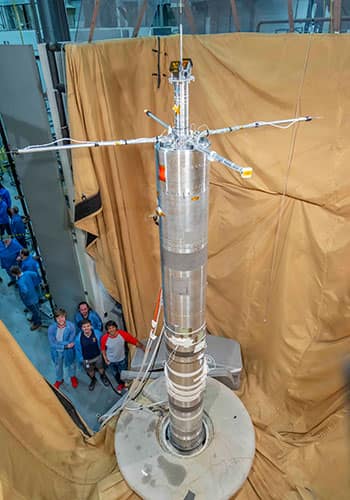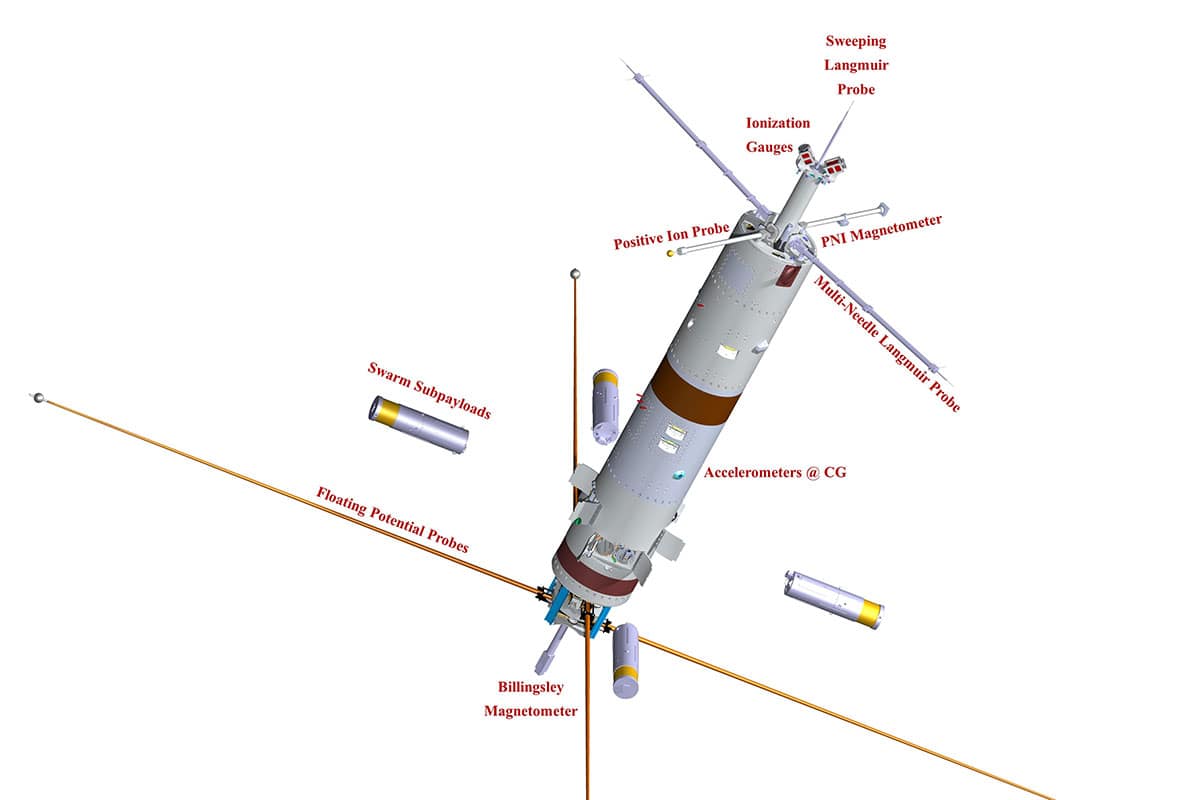
SpEED Demon sounding rocket payload with booms deployed after spin testing. M.S. student Peter Ribbens and Ph.D. student Nathan Graves with Drs. Barjatya and Clayton during I&T at Wallops Island. (Photo: NASA Wallops/Berit Bland)
SpEED Demon was a NASA-funded sounding rocket technology demonstration risk-reduction mission that tested a comprehensive science instrumentation package with a sounding rocket launch on August 23, 2022, from Wallops Flight Facility in Virginia. The launch occurred at 9:16 p.m. local time.
SpEED Demon stands for Sporadic-E ElectroDynamics Demonstration mission. The exact same payload will fly on the NASA-funded SEED mission, with the scientific goal of studying low-latitude Sporadic-E layers.
The main payload consisted of a Sweeping Langmuir Probe for plasma density and electron temperature, a pair of Multi-Needle Langmuir Probes for 5KHz electron density, a Positive Ion Probe for relative ion density, ionization gauges and sensitive accelerometers for background neutral density, a suite of sensitive magnetometers, and a pair of electric field measurements. The main payload also ejected four sub-payloads, each carrying ion density measurement along with a sensitive magnetometer and an accelerometer capable of performing "falling sphere" analogous neutral density measurements. The launch was supported by ground-based observations from VIPIR Dynasonde MIT Millstone Haystack ISR.
Late August is the tail end of the Northern Hemisphere Sporadic-E (Es) Layer season, and SpEED Demon was launched into an Es layer as detected by VIPIR radar.
Most instruments were operated at a 5 KHz sampling rate, giving a better than 30 cm spatial resolution of most physical quantities: plasma and neutral density, magnetic and electric fields.
Versions of the mNLP, PIP and FPP instruments are also being built for the NASA ESCAPADE dual satellite mission to Mars. Thus, this mission will also increase the TRL of these instruments for interplanetary missions.
Results of the mission are being prepared for multiple journal manuscripts. First-cut results from various instruments were presented at the AGU Fall Meeting 2022 and CEDAR Workshop in Summer 2023. These are linked below:
- An overall payload overview with instrument performance characteristics as presented by Dr. Robert Clayton.
- Magnetic field measurements inside the Sporadic E layer by Dr. Joshua Milford.
- Detailed analysis and presentation of the simultaneous multi-point density measurements from ejected sub payloads by Dr. Henry Valentine.
- Neutral density measurements from falling cylinder accelerometer data by Dr. Nathan Graves.
SpEED Demon: A tech demo mission for simultaneous multipoint measurements of electrodynamics and neutral dynamics

